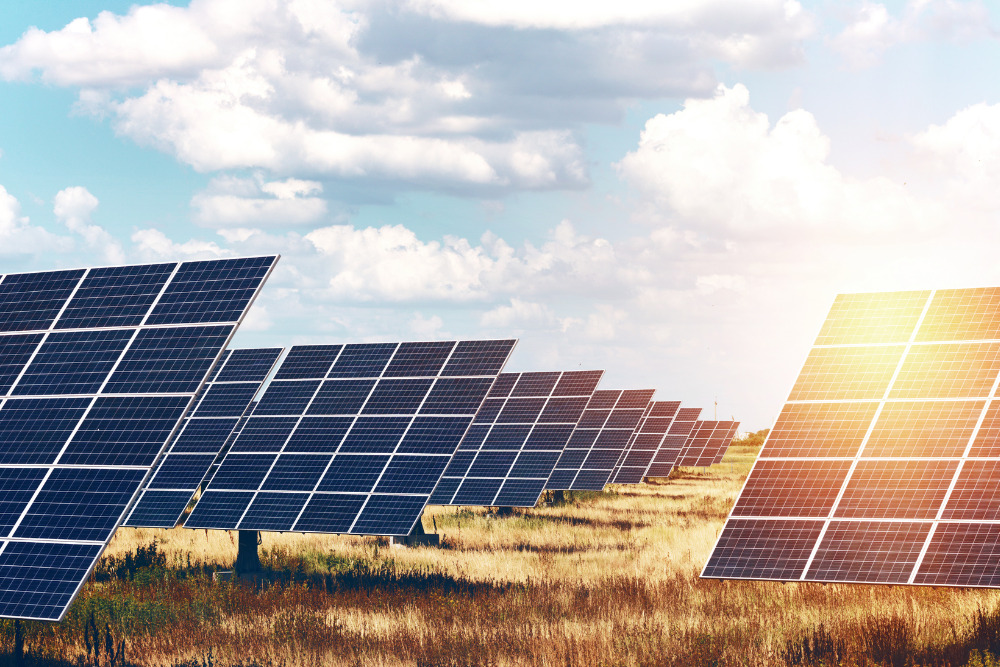Solar Energy 101: A Newbie's Guide to Sustainable Energy Solutions
As the world increasingly moves in the direction of sustainable energy remedies, understanding the principles of solar power ends up being important for both people and services. By exploring the benefits of solar innovation, together with the financial incentives and setup processes, one can acquire a clearer point of view on just how to successfully integrate this eco-friendly source into their energy strategy.
Comprehending Solar Power
At its core, recognizing solar power entails comprehending the fundamental principles of exactly how sunlight can be converted into functional electrical power. Solar power is originated from the sunlight's radiation, which can be used through numerous modern technologies. The primary device for this conversion is the photovoltaic effect. This phenomenon occurs when sunshine strikes semiconductor products, typically silicon-based, within solar batteries. The power from the sunshine excites electrons in the semiconductor, enabling them to move freely and produce direct current (DC) power.

Understanding solar power also includes identifying its ecological benefits. By using sunlight, we can minimize greenhouse gas emissions and decrease air pollution, adding to a more sustainable future. The advancements in technology and performance of planetary systems continue to improve their feasibility, making solar energy a significantly appealing choice for international power needs.
Kinds Of Solar Energy Systems
Numerous kinds of solar power systems are commonly utilized to harness solar power for electricity generation. The key groups consist of photovoltaic or pv (PV) systems, concentrating solar power (CSP) systems, and solar thermal systems.
Photovoltaic systems use photovoltaic panels composed of silicon cells that transform sunlight straight right into electrical energy. These systems are versatile and can be mounted on rooftops, ground places, or integrated right into building materials.
Focusing Solar energy systems, on the various other hand, use mirrors or lenses to concentrate sunlight onto a little location, generating warm that drives a steam wind turbine to create electricity - Simply Solar Illinois. CSP systems are typically deployed in massive nuclear power plant and require straight sunshine, making them less ideal for gloomy areas

Each kind of solar power system has its special characteristics, applications, and viability relying on geographic location, energy needs, and budget, making it necessary to examine choices based upon specific situations. - Simply Solar Illinois

Advantages of Solar Power
Harnessing solar power via various systems not just gives a sustainable way to generate electricity but additionally uses a multitude of benefits. Among one of the most substantial advantages is the reduction in greenhouse gas exhausts, adding to a cleaner environment and combating climate change. Solar power is sustainable, indicating it is endless and offered as long as the sun beams, unlike fossil gas, which are finite and diminishing.
Moreover, solar power can bring about considerable price financial savings go right here over time. House owners and organizations can reduce their electrical energy costs considerably, and oftentimes, they might earn credit scores for excess power generated through net metering. Furthermore, the solar market creates work, from making to installation, stimulating neighborhood economic climates.
One more compelling benefit is power independence. By generating their own electricity, individuals and communities can decrease dependence on outside power resources, improving durability versus changing energy costs and supply disturbances. In addition, solar energy systems require very little maintenance, making them a hassle-free alternative for sustainable power generation.
Setup Refine Overview
The installation procedure for solar power systems commonly entails numerous vital actions that make sure efficient combination right into a residential property. Initially, a detailed website evaluation is conducted to review the roofing's orientation, shading, and architectural integrity, which are important to enhancing discover this solar panel efficiency. Following this analysis, the style stage starts, where a tailored solar power system is configured based on the home owner's energy requirements and preferences.
When the design is settled, the required licenses and approvals are gotten from neighborhood authorities, making sure conformity with policies. The real installment involves mounting the solar panels on the roofing system or ground, connecting them to an inverter, and incorporating the system with the building's electric configuration. This phase may additionally include installing battery storage space systems, depending on the design.
With the installment full, the solar energy system can start generating sustainable power, adding to sustainability and minimizing energy prices. This structured technique makes sure that solar systems are both efficient and reliable, maximizing their long-term benefits.
Financial Rewards and Financial Savings
Discovering the monetary rewards and savings linked with solar energy systems can substantially enhance the allure of making the switch to renewable resource. Numerous motivations exist at government, state, and regional degrees, developed to minimize the first costs connected with solar installation. Among the most significant motivations is the federal solar tax credit score, which allows home owners to subtract a percent of their solar system installation expenses from their government taxes. Since 2023, this credit report stands at 30%, providing significant financial savings.
Along with tax obligation credit scores, several states use discounts that can better lower upfront costs. Some utility companies additionally supply performance-based rewards, satisfying solar energy manufacturing gradually. Funding my latest blog post alternatives, such as solar car loans and leases, enable consumers to set up systems with little to no deposit, making solar power extra accessible.

Furthermore, solar systems can enhance residential property values, supplying a solid return on investment. In general, the combination of incentives and cost savings makes solar power a financially appealing option for lots of households.
Verdict
Finally, solar energy represents a vital element of lasting energy solutions, offering a pathway toward lowered carbon footprints and improved environmental defense. The varied sorts of solar power systems, combined with substantial monetary rewards, assist in wider fostering among individuals and neighborhoods. Comprehending the installation procedures and benefits linked with solar energy encourages stakeholders to make educated choices. Inevitably, the transition to solar power not only promotes environmental duty yet also promotes financial savings and energy self-reliance.